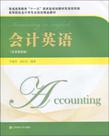会计英语
出版时间:2009-11 出版社:上海财经大学出版社有限公司 作者:叶建芳,孙红星 编著 页数:311
Tag标签:无
前言
根据读者的要求,为了适应不同层面相关专业人员的会计英语学习的需求,现在“‘十一五’国家级规划重点教材”《会计英语》的基础上进行重新编写了《会计英语》(双语简明版),教材分为九章,第一至第三章是对会计的性质以及会计信息产生过程的叙述;第四至第八章是关于资产、负债和所有者权益的确认、计量和报告;第九章是关于有关企业经营活动对现金流量表的影响,以及如何编制现金流量表。为了满足读者需要,最后附录中有主要报表的中英文对照表。 本教材的特点在于简化了相关章节的内容,力求精简。本书适应于各种类型院校的财务会计专业学生以及企业相关财务人员的学习。 本书每一章有自测题、练习题、问题,以使读者通过练习,掌握所学内容。自测题答案在每一章的最后一页,练习题和问题的参考答案在书本的最后附录中。叶建平、罗冬梅(上海金融学院)、贾纬璇、陈雪梅、乔轶、李佳佳和王悦参与了本书的部分编写工作。 另外,为了便于教师教学和读者自学的需要,本书备有中文翻译和教师教学用的课件。若有需要,请查询上海财经大学出版社网站,并在网上免费下载。联系人王永长,电话:021-65903826。
内容概要
《会计英语》力求在帮助读者掌握会计词汇的同时,通过阅读使读者能够较为全面地学习西方会计专业知识,满足对外交流与合作的需要。《会计英语》的特点在于结合中国的会计准则,同时适当介绍国际会计准则、美国公认会计原则的相关会计实践与方法,力求使初学者能够在英语状态下,了解会计的基本理论、基本方法、基本技能等。《会计英语》是为教学需要编写的,可作为普通高等院校的教学用书。
书籍目录
1 An Introduction to Accounting 1.1 Accounting is an Information System 1.2 Forms of Organization 1.3 The framework for The Preparation and Presentation of Financial Statements 1.4 Understanding of Financial Statements Balance Sheet Income Statement Statement of Owner' s Equity Cash Flow Statement 1.5 Accounting and Its Profession 1.6 Accounting Elements and Using the Accounting Equation What is Accounting Equation? Effects of Transactions on the Accounting Equation 1.7 Ethics in Accounting Some Basic Ethical Standards Demonstration Problem Vocabulary Self-Test Questions Discussion Questions Exercises Problems Mini-Case2 Recording Transactions 2.1 Economic Events and Business Documents 2.2 T Accounts and Debit & Credit Types of Accounts Chart of Accounts and Ledger The Accounting Equation and the Rules of Debits and Credits Normal Balances 2.3 Journalizing and Posting Transactions Journalizing Transactions Posting Transactions 2.4 Preparing a Trial Balance Trial Balance Locating and Correcting Errors Formatting Conventions 2.5 Using the Information - the Debt Ratio Demonstration Problem Vocabulary Self-Test Questions Discussion Questions Exercises Problems3 Adjusting the Accounts, Preparing the Statements, and Completing the AccountingCycle 3.1 The Need for Adjustments Time Period Principle Need for Adjustments at the End of an Accounting Period Accrual and Cash Basis of Accounting 3.2 Adjusting the Accounts Prepaid Expenses ……4 Accounting for Merchandising Enterprises5 Accounting for Cash,Trading Securities and Receivables6 Inventories and Cost of Goods Sold7 Long-Term Assets:Investments,Fixed Assets,Natural Resoureces and Intangible Assets8 Current and Long-Term Liabilities9 Owner's Equity10 Statement of Cash Flows
章节摘录
Depreciation is the term used for the expiration or using up of a capital (also known as longlived, fixed or plant) asset ( for example, equipment and buildings). It is the allocation of the cost of a plant asset to expense over its useful life. The following points define depreciation: Depreciation is similar to the expiration or using up of a prepayment, except the a-mount of depreciation in each accounting period is based on subjective estimates, in other words,judgment in terms of estimating the asset s useful life and estimating its salvage or trade-in value. Depreciation is an estimate of the decline in usefulness, not necessarily a decline invalue. Depreciation is a method of cost allocation, not asset valuation. A capital asset whosemarket value is increasing would still be amortized (except for those capital assets, such asland, that are not amortized). While the asset generates revenues, it gradually wears out. Tomatch the expense of the asset to the revenues it is generating, the cost of the asset must bespread over its useful life as an expense. The amount of the asset used in a period is determined by allocating the net amortizablecost of the asset (original cost less expected trade.in allowance) over the expected useful life ofthe asset.
图书封面
图书标签Tags
无
评论、评分、阅读与下载
用户评论 (总计26条)
- 这本会计英语好像不是最新版 但是内容没什么差
- 翻译的很好,但是需要读者的会计水准也 要好哦。
- 老师推荐的,双语简明版,比较简单的版本,易懂易学
- 还没详细阅读,初步印象还不错,适合我学些。
- 这本书还是专业性很强的
- 包装很好,送货速度很快,还未用……
- 难度适中,练习题丰富,好
- 使用中,还行吧
- 书不错的~加油~
- 很好哦 和在学校订的书一样
- 书本无褶皱,很好
- 比我们学校的好多了便宜多了
- 这本书是会计英语的最专业之作,能够很好的学习会计英语,不错
- 收到这本书的时候,本以为是双语,结果另我很失望,除了目录和最后的表格对照,里面的内容全部是英文,连算式都是!如果你的英语基础不是很好,我觉得这本书实在不适合大家!最后的资产负债表等的中英对照,感觉还不错就是了!可是总觉得有点直译效果!要是这本书能够侧重分析两个国家的区别就更好了!
- 总体不错 就是中文要在网站下载比较麻烦 有单词印刷错误 另外英语不好所以不知道英文表达是不是地道 有些表达觉得怪怪的 但是内容排的不错 习题也有针对性
- 设计的章节更多的是对会计学科的介绍。作为理论性教学和研究还是不错的。
- 练习题和PPT课件呢?
- 还可以吧,很实用,耐心看就可以有收获
- 还没来得及仔细看,只大概看了一眼,好象还可以
- 听说不错·不过感觉一般···不过质量很好····
- 找了很久,终于找到,正是我想要的
- 一本简明版,一本双语版!!有一小点不太一样,不过还不错!
- 英语方面还行,但中文说明比较少
- 收到的书不是双语,不知为何要如此名不副实
- 就是中文少,我去下载了电子课件的,去出版社网站
- 书封面上写的是双语,但实际只是是英语,并不是英汉对照的。
